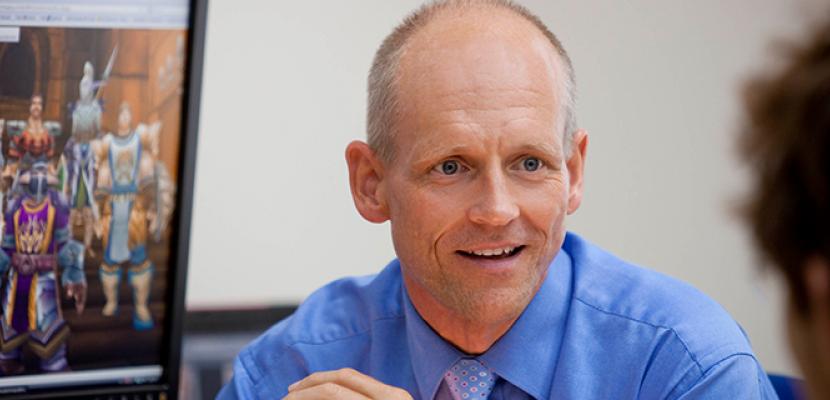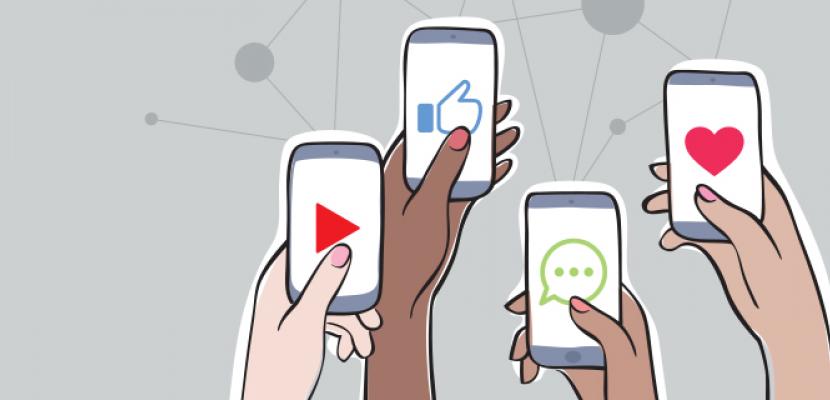
Is your digital literacy up to scratch?
Can you explain terminology such as algorithm, avatar, blockchain, mobile telephony, hyperlocal and latent semantic indexing?
If you can’t, you may be falling behind in an ever-changing digital landscape.
But you’re not alone. Statistics show that only 10 per cent of us are fully digitally literate. That leaves 90 per cent of us left to convert in the rapidly changing digital economy.
Australia is also slipping behind the rankings when it comes to digital fluency and literacy and Bond University’s communications and media expert Professor Jeffrey Brand argues we need to wake up and keep up.
“We’ve had 26 years of unprecedented growth with resources and primary industries driving wealth in Australia, so there has been less of an urgency to upskill in digital here,” he says.
“We do seem to be good with exploring new technologies as consumers, but organisations don’t have the scale or depth to keep up with businesses in countries such as China.
“We’re still in the top 20 economies, but now is the time for future Australian workers to be more agile.”

We need both people and technology
Professor Brand argues that digital transformation (or DX for those in the know) is as much about transforming human abilities as it is about using digital tools.
He explains digital literacy as having the knowledge to assess an organisation for its digital readiness, using culture to back digitisation and acceptance of those tools.
“The human transformation is the most important thing,” he says.
“There is no doubt that technology will outpace the ability of organisations to change. You and I are quicker to adapt to things such as video games from a consumer angle, but our governments, businesses, schools and organisations seem to be the last to come on board because to transform an organisation is risky, costly and time consuming.”
If a digital transformation only focused on rapidly changing technology, it wouldn’t be able to keep pace, Professor Brand warns.
But when organisations build a digital culture and discover new ways of working by automating processes and use broad technologies like cloud, mobile and social in creative new ways, they rocket ahead of the competition.
“Who wouldn’t want to work in that kind of business? It’s an exciting career.”
Years of research on digital transformations has shown that the success rate for these efforts is consistently low with less than 30 percent succeeding.
Even digitally savvy industries, such as high tech, media, and telecom, are struggling.
Among these industries, the success rate does not exceed 26 percent. But in more traditional industries, such as oil and gas, automotive, infrastructure, and pharmaceuticals, digital transformations are even more challenging, with success rates falling between four and 11 percent.
Therefore, employers are looking for new talent that can do better.
This is the idea behind the Transformation CoLab at Bond University and the new Bachelor of Digital Transformation.

Innovators’ dilemma
There will always be something better when it comes to technology. Creators need to think about when to produce the next new product and organisations need to think about when they should change the way they work.
But a qualified digital transformation expert will be able to work out when is a good time to adopt a digital technology and assess what is stopping people from readily accepting a new way of doing things.
Bond University’s new Bachelor of Digital Transformation will equip students with this knowledge.
“The future is digital and we need people to solve problems to plan for the future,” Professor Brand says.
“If only 10 percent of us are digitally fluent, there are 90 per cent left to convert and we are going to need experts in this field capable of doing that. “
Bachelor of Digital Transformation
Learn more about Bond's game-changing Bachelor of Digital Transformation
Test your Digital Literacy
1. What is an algorithm?
A. A process or set of rules to be followed in calculations or problem-solving operations
B. A process controlled by Facebook that lets it control the world
2. What is an avatar?
A. A genetically engineered body to house a human mind.
B. An icon or figure representing a person on the internet
3. The definition of blockchain?
A. A system in which a record of transactions are made in cryptocurrency are maintained across computers that are linked together in a peer-to-peer network
B. A series of metal chains interlinked that one would wear around their neck as a fashion statement.
4. What is mobile telephony?
A. The provision of telephone services to phones which may move around freely rather than stay fixed in one location.
B. The ability for mobile phones to read our minds in the future.
5. What is hyperlocal?
A. A supermarket in a community where people can buy products
B. Orientating information around a well-defined community, often referred to as niche marketing
6. What does latent semantic indexing mean?
A. A method used to identify patterns in a collection of data
B. A concealed message on the dark web
--
Ready for the answers?
1. A; 2. B; 3. A; 4. A; 5. B; 6. A.